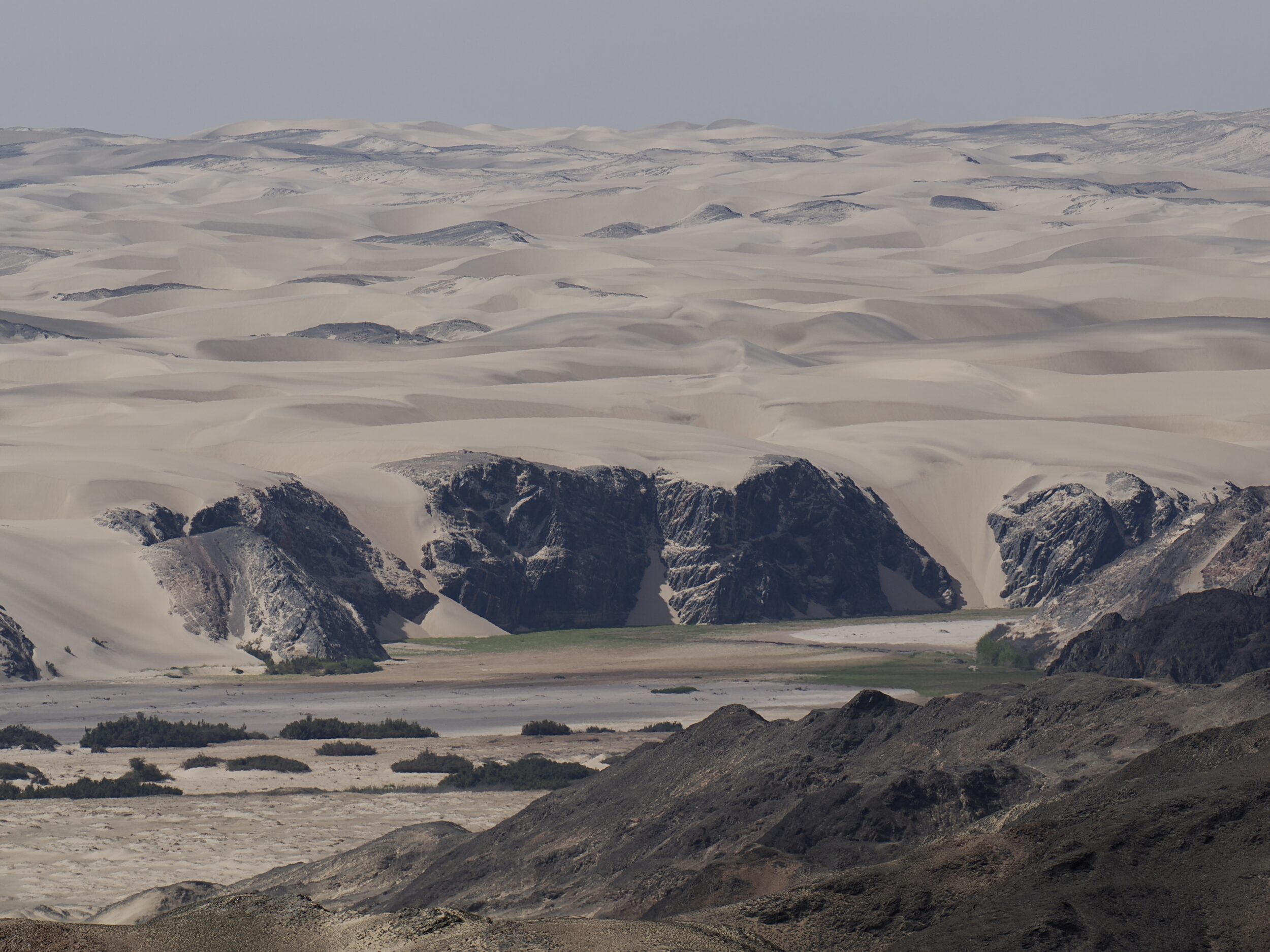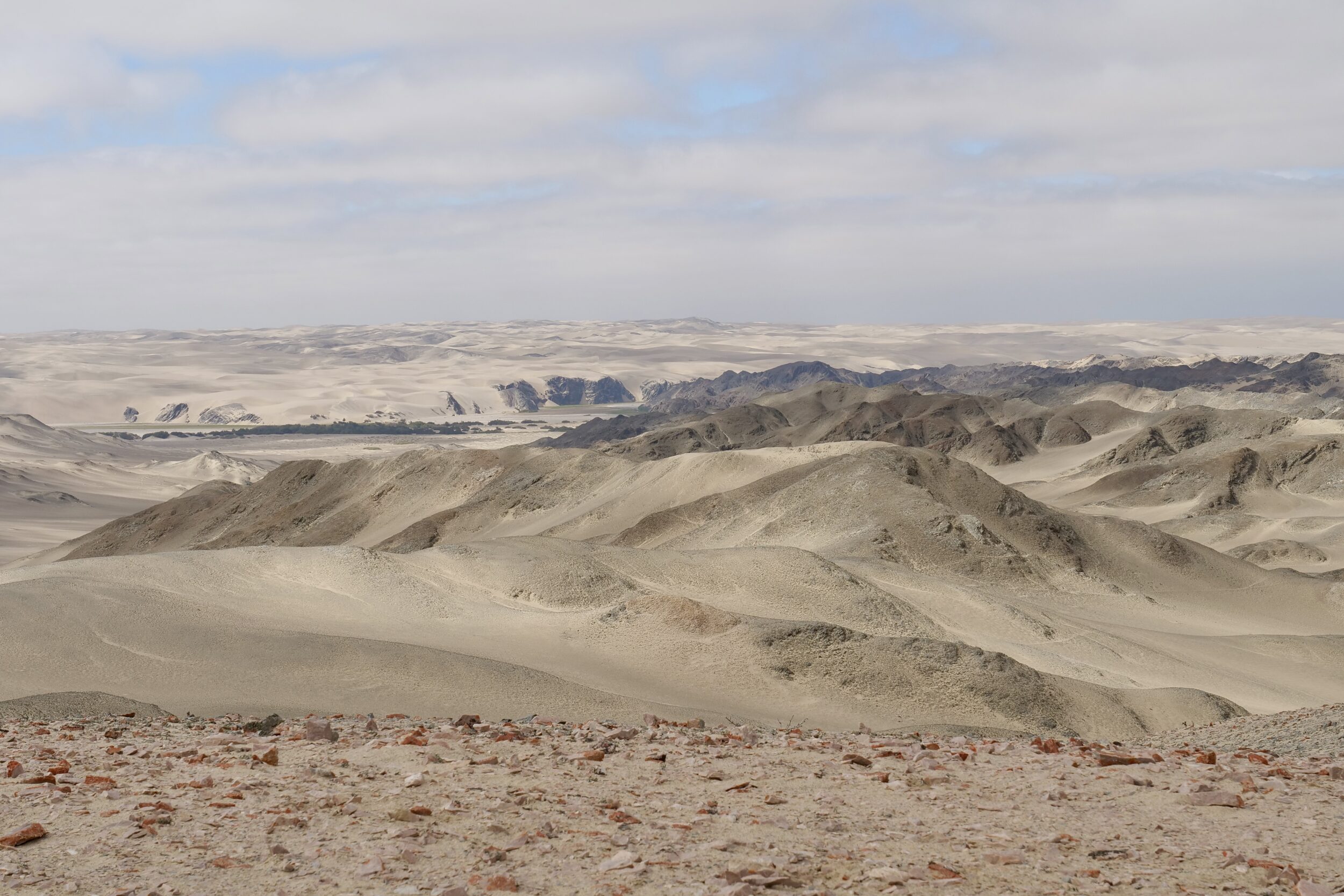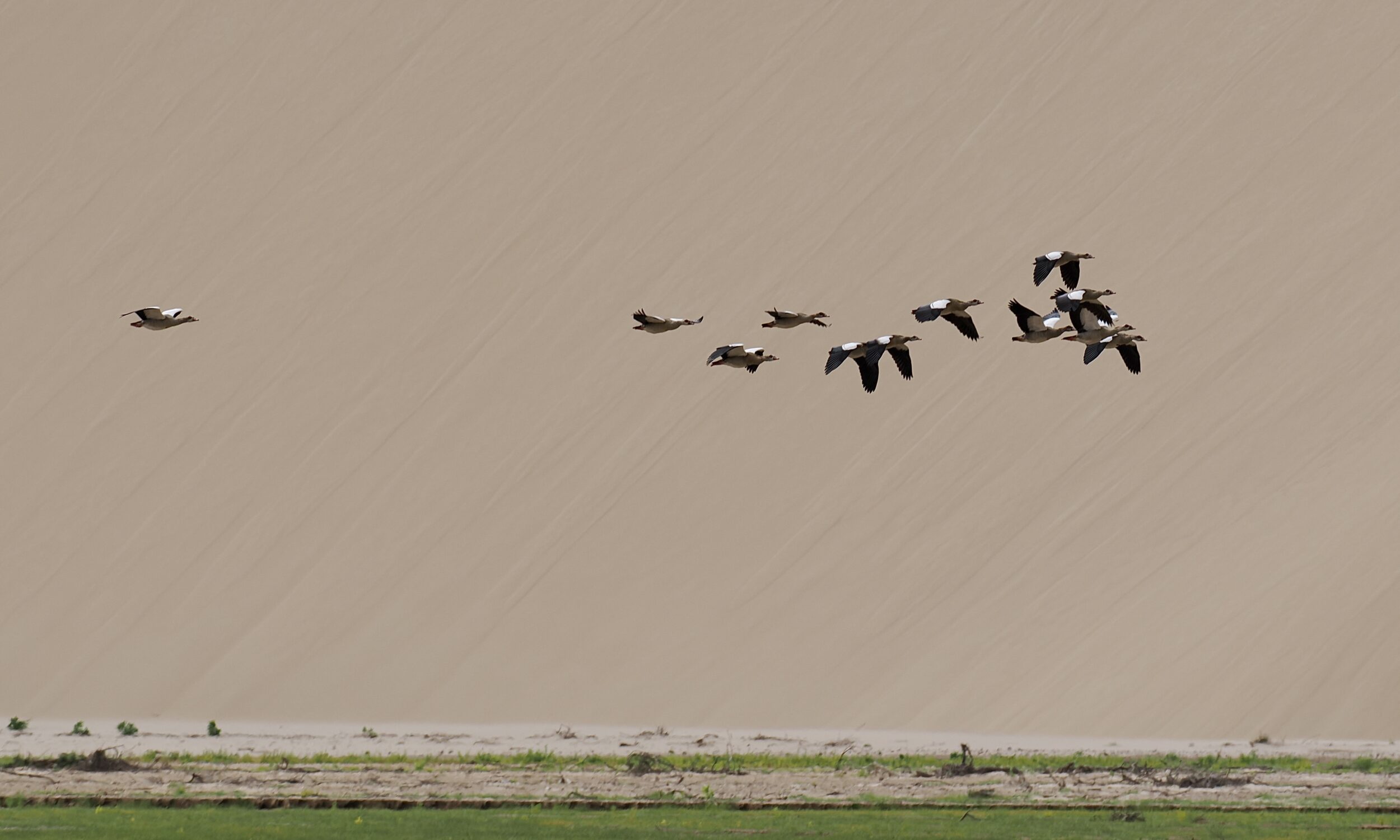Although the vantage point remains the same, this post’s images were shot with a telephoto lens; effectively, their view of the Hoarusib River is nearly seven times “closer” than that offered by the image in this series’ previous post.
At this point, the river and its surrounding landscape are quite unlike where the Hoarusib – rarely, and briefly – delivers a readily-visible flow of fresh water to the “Skeleton Coast” edge of the Atlantic Ocean.
Yet, where I stood – and the stretch of the Hoarusib visible in these photos – are only circa 30 minutes’ drive from the river’s oft-dryish mouth.
In a straight line, the ocean is almost certainly rather less than 20 kilometres distant.
Comments closed








